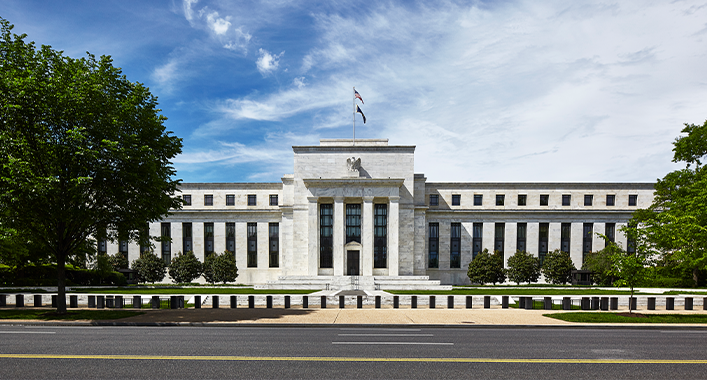Expectations of further interest rate rises in the US, eurozone and UK have been fully priced out on strengthening optimism that we have reached a cyclical peak in interest rates and that developed central banks will ease policy in 2024. Yields peaked in October 2023 on the ‘higher for longer’ narrative before moving sharply lower through the end of 2023 with a pivot towards earlier and faster rate cuts becoming embedded in futures pricing. The rally meant the Bloomberg Global Aggregate Treasuries Index returned 8.1%, marking its strongest quarter since 2010.
January 24, 2024
The consensus is now for a soft landing with continued disinflation while avoiding undue economic impact. Expectations for interest rate cuts in 2024 should be a tailwind for duration-related assets. The US Federal Reserve (Fed) and European Central Bank (ECB) are expected to begin easing rates in March/April, with the UK to follow in the second quarter. Markets have now priced in more than 100 basis points of rate cuts in each market during 2024.
Our highest conviction is in US and UK rates exposure. The Fed has historically been the first mover across developed market central banks, whereas we think the ECB is likely to delay cuts until there are firmer signs of easing wage growth. We see value in the UK relative to Europe given the UK’s higher interest-rate sensitivity and its more attractive yields. Exposure to Japanese Government Bonds remains less appealing given the expected policy normalisation from the Bank of Japan.
We also favour curve steepener positions as a recession remains a possibility given the extent of interest rate increases and that we may yet see the full impact of those increases. Given the strength of consensus behind a soft-landing scenario and extent of cuts already priced by the market, our strategy is to combine modestly increased duration exposure with curve steepener positions. This positioning should help to mitigate against the risk of investing exclusively around the binary outcome of hard versus soft landing.
Our outlook for currencies is balanced. Lower US rates would reduce the real rate differential versus other currencies, however, this is offset by the downside risk of weaker global growth, which would support the US dollar. We do, however, see value in the Japanese yen given the Bank of Japan is expected to move away from its ultra-accommodative monetary policy stance in 2024.






